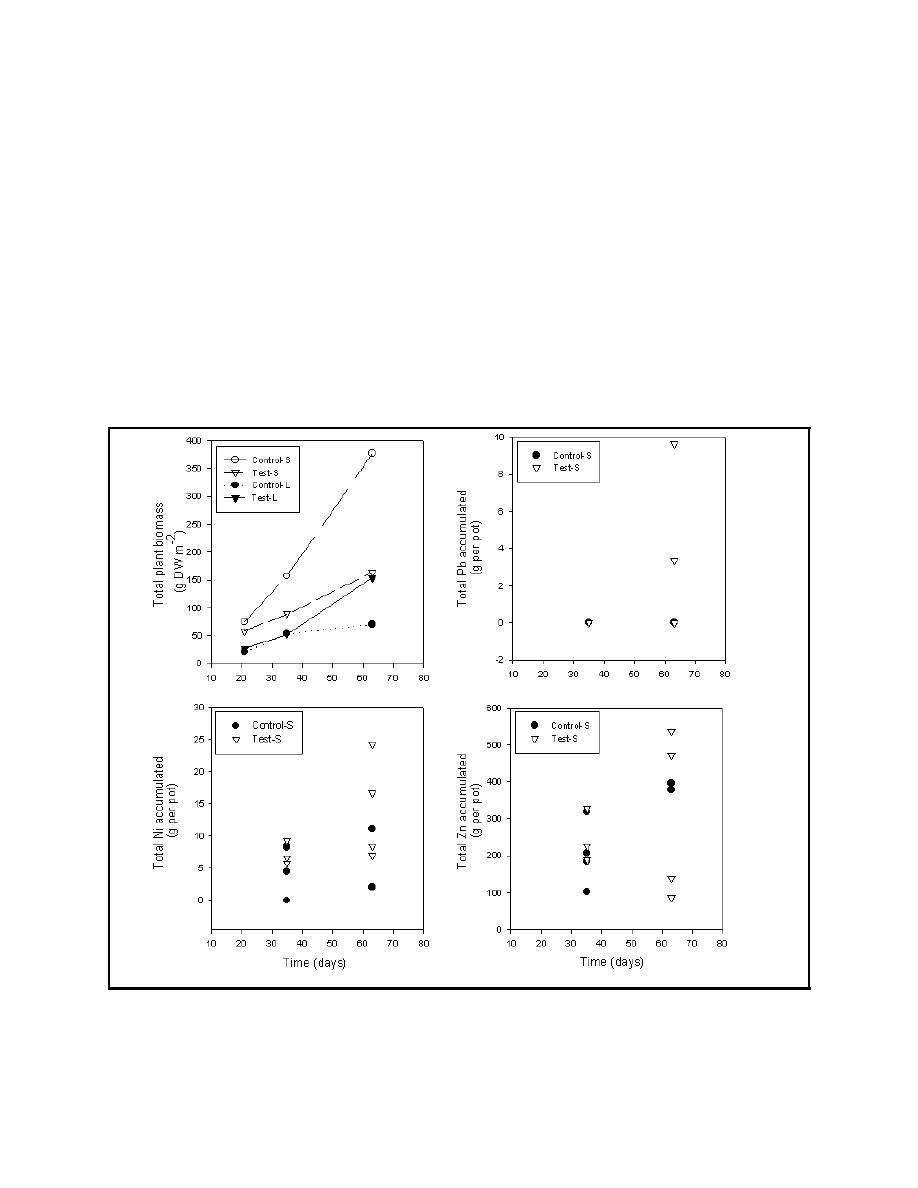 |
||
|
|
||
|
Page Title:
Figure 2. Average growth response (N = 4) of C. esculentus plants cultivated on test dredged material and control soil in 2-L... |
||
| |||||||||||||||
|
|
 ERDC TN-DOER-C22
September 2001
metals using Inductively Coupled Plasma Analysis (ICP) (USEPA Method 3050 (USEPA 1996)),
or cold-vapor determination for mercury (USEPA Method 7471A (USEPA 1994)).
Toxicity. Analysis of variance (ANOVA) of the complete data set indicated that the effect of
substrate on growth response (i.e., total biomass) was not statistically significant, but the effects of
plant species and test duration were significant (P < 0.001). The data are graphically represented in
Figures 2 and 3. This means that the differences in growth responses of both plant species could
not be attributed to differences in substrate type alone, i.e., test dredged material being phytotoxic
compared to control soil, but that they depended on plant species and on test duration. The effect
of pot size on the belowground plant biomass of C. esculentus was significant, with more biomass
being produced in the relatively deeper pots with the smallest surface area (P < 0.05). The effect of
pot size on total biomass of C. dactylon (roots were so small that belowground and aboveground
biomass was not distinguishable) was also significant, with more biomass being produced in the
pots with the largest surface area (P < 0.05).
Figure 2. Average growth response (N = 4) of C. esculentus plants cultivated on test dredged material
and control soil in 2-L pots, with a small (S, 0.0167 m2 ) and large (L, 0.0238 m2) surface area
(top left). Bioaccumulation of lead, nickel, and zinc was also measured; of the bioaccumulation
data, only those pertaining to pots with a small surface area are shown
11
|
|
Privacy Statement - Press Release - Copyright Information. - Contact Us - Support Integrated Publishing |